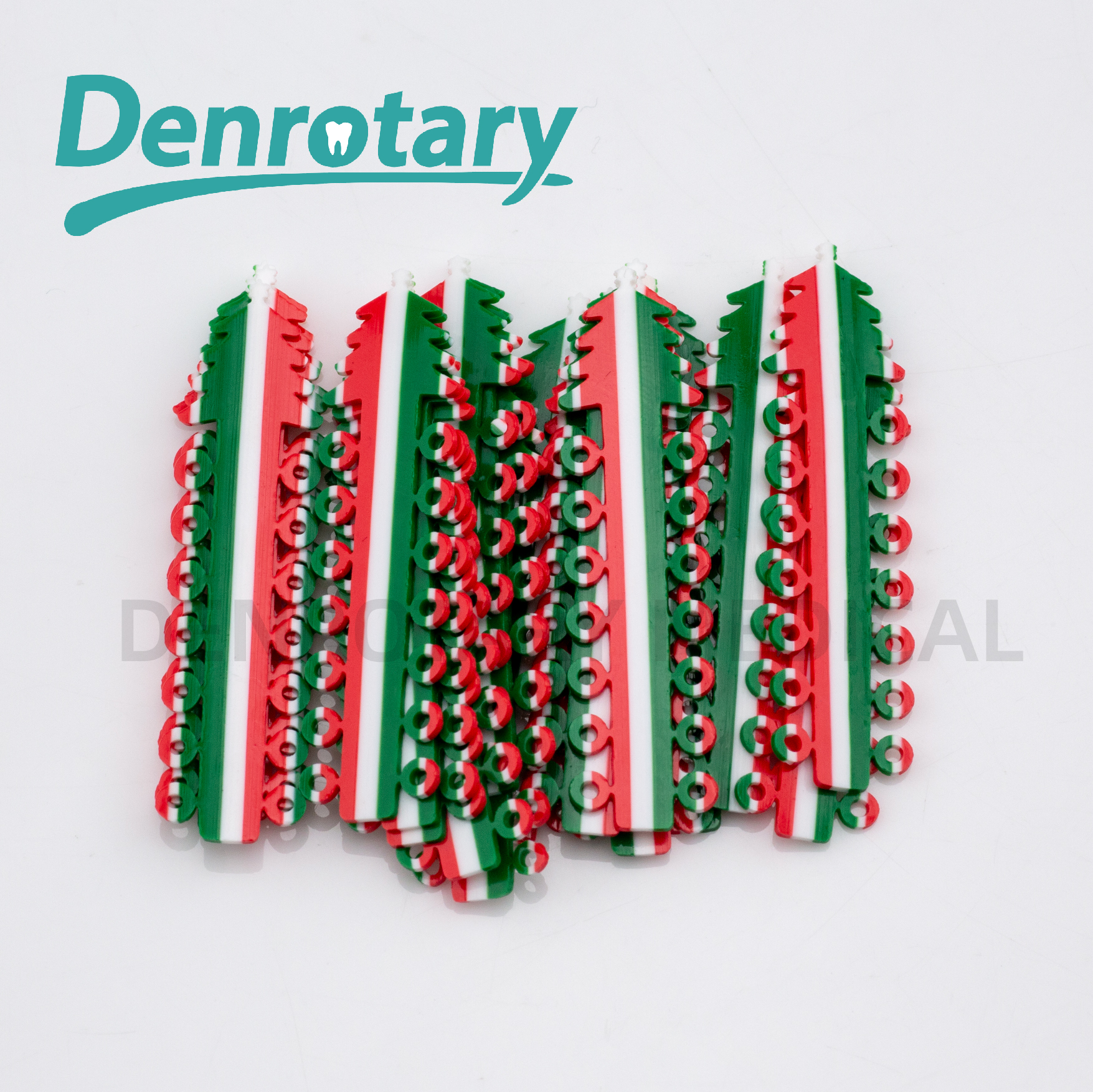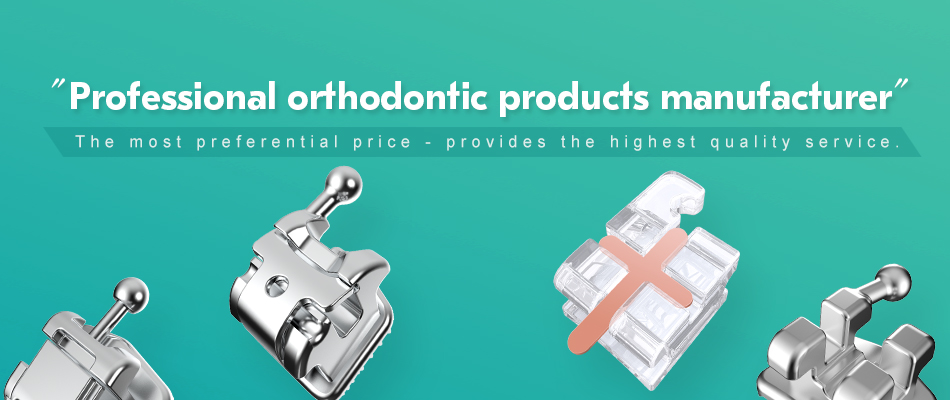Reducing breakage rates in dental ligatures is crucial for effective orthodontic treatments. When ligatures break, they can delay patient care and complicate treatment plans. You must prioritize stringent manufacturing quality control to ensure the reliability of these essential components. The quality of the Orthodontic Elastic Ligature Tie directly affects patient outcomes.
Key Takeaways
- Prioritize quality assurance to ensure dental ligatures meet high standards. This practice enhances patient safety and treatment effectiveness.
- Implement regular material testing and in-process inspections to catch defects early. These steps help maintain consistency and reduce breakage rates.
- Invest in staff training to improve handling techniques and quality control knowledge. Well-trained employees can identify issues before they escalate.
Importance of Quality Assurance
Quality assurance plays a vital role in the manufacturing of dental ligatures. It ensures that every product meets specific standards before reaching the orthodontist. Here are some key reasons why you should prioritize quality assurance:
- Consistency: Quality assurance helps maintain uniformity in the production process. When you implement strict quality checks, you reduce the chances of defects in ligatures. This consistency leads to better performance during treatment.
- Patient Safety: High-quality ligatures contribute to patient safety. When ligatures break, they can cause discomfort or even injury. By focusing on quality, you protect your patients from unnecessary risks.
- Cost Efficiency: Investing in quality assurance can save you money in the long run. Fewer breakages mean less waste and lower replacement costs. You can allocate resources more effectively when you minimize defects.
Tip: Regularly review your quality assurance processes. This practice helps identify areas for improvement and ensures that you stay ahead of potential issues.
- Reputation: Your reputation as a manufacturer hinges on the quality of your products. High breakage rates can damage your credibility. By prioritizing quality assurance, you build trust with orthodontists and patients alike.
Common Causes of Breakage
Understanding the common causes of breakage in dental ligatures can help you take proactive measures. Here are some key factors that contribute to breakage:
- Material Quality: The type of material used in manufacturing ligatures significantly affects their durability. Low-quality materials may not withstand the forces applied during orthodontic treatment.
- Improper Handling: Mishandling ligatures during installation or removal can lead to breakage. You should always follow proper techniques to minimize stress on the ligatures.
- Environmental Factors: Exposure to extreme temperatures or humidity can weaken ligatures. Ensure you store ligatures in a controlled environment to maintain their integrity.
- Design Flaws: Sometimes, the design of the ligature itself can lead to breakage. Manufacturers must evaluate their designs regularly to identify potential weaknesses.
Tip: Conduct regular assessments of your ligature handling procedures. This practice can help you spot areas for improvement and reduce breakage rates.
By recognizing these common causes, you can implement strategies to mitigate risks. Focus on using high-quality materials, training staff on proper handling techniques, and regularly reviewing your product designs. Taking these steps will lead to better outcomes for both you and your patients.
Quality Control Measures
Implementing effective quality control measures is essential for reducing breakage rates in dental ligatures. You can adopt several strategies to ensure that your products meet high standards. Here are some key quality control measures to consider:
- Material Testing: Before production, test all materials used in the manufacturing process. Ensure that they meet industry standards for strength and durability. This step helps you avoid using subpar materials that may lead to breakage.
- In-Process Inspections: Conduct regular inspections during the manufacturing process. Check for defects at various stages, from raw materials to finished products. This practice allows you to catch issues early and prevent defective ligatures from reaching customers.
- Final Product Testing: After production, perform rigorous testing on the final products. Use standardized tests to evaluate the strength and elasticity of the Orthodontic Elastic Ligature Tie. This testing ensures that each ligature can withstand the forces applied during orthodontic treatment.
- Feedback Loops: Establish a system for collecting feedback from orthodontists and patients. Use this information to identify common issues and areas for improvement. Regularly review this feedback to adapt your quality control measures accordingly.
- Documentation and Traceability: Maintain detailed records of all quality control processes. Document material sources, inspection results, and testing outcomes. This practice enhances traceability and accountability, allowing you to address any issues that arise.
Tip: Consider using statistical process control (SPC) techniques. These methods help you monitor and control the manufacturing process, ensuring consistent quality over time.
By implementing these quality control measures, you can significantly reduce breakage rates in dental ligatures. Focus on continuous improvement and adapt your strategies based on the latest industry standards and feedback. This proactive approach will lead to better patient outcomes and enhance your reputation as a reliable manufacturer.
Implementation Strategies
To effectively implement quality control measures in your dental ligature manufacturing process, follow these strategies:
- Develop a Quality Control Plan: Create a detailed plan outlining your quality control processes. Include specific goals, responsibilities, and timelines. This plan will serve as a roadmap for your team.
- Train Your Staff: Invest in training programs for your employees. Ensure they understand the importance of quality control and how to execute it. Regular training sessions will keep everyone updated on best practices.
- Utilize Technology: Leverage technology to enhance your quality control efforts. Use automated systems for inspections and testing. These tools can improve accuracy and efficiency in identifying defects.
- Conduct Regular Audits: Schedule routine audits of your manufacturing processes. These audits will help you assess compliance with your quality control plan. Identify areas for improvement and make necessary adjustments.
- Engage with Stakeholders: Maintain open communication with orthodontists and patients. Gather feedback on your ligatures and their performance. Use this information to refine your products and processes.
Tip: Set measurable objectives for your quality control initiatives. Tracking progress will help you stay focused and motivated.
By implementing these strategies, you can create a robust quality control system. This system will not only reduce breakage rates but also enhance the overall quality of your dental ligatures. Prioritize these steps to ensure long-term success in your manufacturing operations.
Benefits of Training and Data Analysis
Training your staff and analyzing data are crucial steps in reducing breakage rates in dental ligatures. Here are some key benefits you can expect:
- Enhanced Skills: Training equips your team with the necessary skills to handle ligatures properly. When employees understand the manufacturing process, they can identify potential issues before they escalate.
- Improved Quality Control: Regular training sessions keep your staff updated on the latest quality control techniques. This knowledge helps them maintain high standards throughout the production process.
- Data-Driven Decisions: Analyzing data allows you to identify trends and patterns related to breakage rates. You can pinpoint specific areas that need improvement, leading to more effective solutions.
- Increased Accountability: When you train your staff and analyze performance data, you create a culture of accountability. Employees take ownership of their roles, which can lead to better outcomes.
Tip: Use data visualization tools to present your findings. Visual aids can help your team understand complex data more easily.
By investing in training and data analysis, you can foster a proactive approach to quality control. This strategy not only reduces breakage rates but also enhances the overall reliability of your dental ligatures. Prioritize these efforts to ensure long-term success in your manufacturing operations.
Role of Orthodontic Elastic Ligature Tie in Quality Control
The Orthodontic Elastic Ligature Tie plays a crucial role in maintaining quality control in dental ligature manufacturing. You must understand how this component affects the overall performance of orthodontic treatments. Here are some key points to consider:
- Strength and Durability: The Orthodontic Elastic Ligature Tie must withstand significant forces during treatment. High-quality ties resist breakage and maintain their elasticity. This durability ensures that they perform effectively throughout the treatment process.
- Consistency in Production: You should prioritize uniformity in the manufacturing of these ties. Consistent production leads to reliable performance. When you implement strict quality control measures, you can ensure that each tie meets the same high standards.
- Impact on Treatment Outcomes: The quality of the Orthodontic Elastic Ligature Tie directly influences patient care. When ligatures break, it can lead to delays and complications in treatment. By focusing on quality control, you enhance the overall experience for both orthodontists and patients.
- Feedback and Improvement: Collecting feedback on the performance of the Orthodontic Elastic Ligature Tie is essential. Use this information to identify areas for improvement. Regularly review your manufacturing processes to adapt to new insights.
Tip: Always test your ligature ties under various conditions. This practice helps you understand their limits and ensures they meet the demands of orthodontic treatments.
By emphasizing the role of the Orthodontic Elastic Ligature Tie in quality control, you can significantly reduce breakage rates and improve patient outcomes.
Reducing breakage rates in dental ligatures requires your commitment to quality control. Focus on consistent material testing, staff training, and feedback loops. These practices enhance patient care and treatment outcomes. Prioritize quality standards in your manufacturing processes to ensure long-term success and build trust with orthodontists and patients.
FAQ
What materials are best for dental ligatures?
High-quality elastomers and thermoplastics provide strength and durability. These materials resist breakage and maintain elasticity during orthodontic treatment.
How can I reduce breakage during handling?
Always follow proper handling techniques. Train your staff on correct installation and removal methods to minimize stress on ligatures.
What testing methods ensure ligature quality?
Conduct material testing, in-process inspections, and final product evaluations. These methods help you identify defects and ensure consistent quality.
Post time: Sep-11-2025


